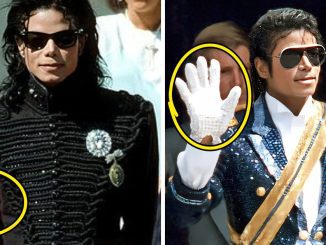For centuries, humanity has pondered the age-old question: What happens to us after we die? While religious or spiritual individuals believe in the concept of heaven, reincarnation, or an afterlife, others argue that death is simply the end. However, recent scientific theories suggest that there might be more to the story. A group of researchers believes that the soul does not die with the body but instead returns to the universe, offering a fascinating new perspective rooted in quantum mechanics.
Let’s explore how this revolutionary theory challenges traditional beliefs about life, death, and consciousness.

The Soul Doesn’t Die When Our Bodies Do
Recent research by scientists Stuart Hameroff and Sir Roger Penrose suggests that while the body dies, consciousness—or what many may call the soul—lives on. According to them, this possibility is explained by the principles of quantum mechanics, which govern the behavior of particles at the atomic and subatomic levels. Quantum mechanics, they argue, allows for the continued existence of consciousness beyond the physical body.
But how is this possible?
At its core, quantum mechanics deals with fundamental particles such as neurons, electrons, protons, quarks, gluons, and other subatomic particles. These are the building blocks of everything in the universe, including our brains. Hameroff and Penrose posit that consciousness is merely information stored at the quantum level—a concept that could forever change how we think about life after death.
Orchestrated Objective Reduction: The Science Behind the Soul
Hameroff and Penrose introduced a groundbreaking theory known as Orchestrated Objective Reduction (Orch-OR). This theory claims that consciousness is stored and processed via microtubules, protein-based structures within human cells. Microtubules play a crucial role in carrying quantum information, which the scientists argue could be the basis for our consciousness.
Dr. Hameroff explains, “Let’s say the heart stops beating, the blood stops flowing; the microtubules lose their quantum state. The quantum information within the microtubules is not destroyed; it can’t be destroyed. It simply distributes and dissipates into the universe.”
In other words, when the body ceases to function, the information stored in these microtubules—our consciousness—does not die. It disperses, becoming part of the larger universe. In cases where a person is resuscitated, Hameroff argues, the quantum information re-enters the microtubules, allowing the person to regain consciousness. This phenomenon could explain near-death experiences in which people report feeling detached from their bodies or witnessing events from an outside perspective.
If the person dies permanently, their consciousness could theoretically continue to exist outside the body—what some may interpret as the soul living on.
Our Perception of the Physical Universe is Limited
Adding to this intriguing theory are researchers from the Max Planck Institute for Physics in Munich, who propose that there is an “infinite beyond” that exists after death. According to these researchers, the physical world that we experience is just a small, perceivable part of a much larger reality.
Dr. Hans-Peter Dürr, a physicist at the institute, explains, “What we consider the here and now, this world, is actually just the material level that is comprehensible. The beyond is an infinite reality that is much bigger.”
This idea suggests that the physical universe, as we know it, is merely a perception created by our limited senses. When we die, our souls are believed to transition into this infinite realm, leaving behind the constraints of the material world. In essence, death may be the doorway to a vast and unexplored dimension where our consciousness continues to exist.

Consciousness and Microtubule Vibrations
Hameroff and Penrose’s research also reveals that human consciousness might be linked to microtubule vibrations at a much deeper quantum level. These vibrations not only help explain the mechanics of consciousness but could also offer new insights into treating mental, neurological, and cognitive disorders.
For example, understanding how these microtubules store and transfer quantum information could provide solutions for diseases like Alzheimer’s, which affects memory and consciousness. If consciousness operates on a quantum level, therapies targeting microtubules could one day enhance brain function and treat cognitive decline more effectively.
Implications for Life, Death, and the Soul
The notion that our consciousness—or soul—does not die but rather becomes part of the universe challenges traditional ideas about life and death. It presents a scientific framework for the concept of life after death, moving beyond religious or spiritual interpretations.
If true, this theory could fundamentally change how we understand the human experience. It suggests that life is not limited to the physical body and that consciousness continues in some form, connected to the greater cosmos. For those who have always believed in the immortality of the soul, this scientific perspective offers a new lens through which to view death not as an end, but as a transformation.

The Debate: Does the Soul Really Live On?
While Hameroff and Penrose’s research is compelling, it is still met with skepticism within the scientific community. Quantum mechanics is an incredibly complex field, and applying it to consciousness remains a controversial topic. Some argue that the theory stretches the bounds of what science can currently explain, and further research is needed to fully understand the mechanics of consciousness at the quantum level.
Nonetheless, their work has sparked a global conversation about what happens after we die. Could the soul, which has been central to human belief systems for millennia, be explained by science? Is it possible that our individual consciousness merges back into the universe, much like how energy disperses in quantum theory?
These questions push the boundaries of science, philosophy, and spirituality, inviting us to reconsider our beliefs about life and death.
Conclusion: A New Understanding of Life After Death?
The work of scientists like Stuart Hameroff and Roger Penrose opens up a world of possibilities regarding life after death. Their research, rooted in quantum mechanics, suggests that consciousness may not be tied to the physical body and could continue to exist beyond death. Whether through microtubules or the vastness of the universe, the idea that our soul might live on offers a thought-provoking glimpse into the future of human understanding.
As science continues to explore the mysteries of the universe, it’s possible that one day we may have a clearer answer to what happens after we die. Until then, the theory that the soul does not die but returns to the universe remains a fascinating intersection of science and the age-old question of life’s greatest mystery.


